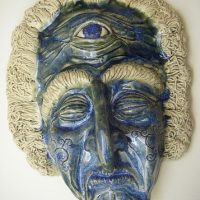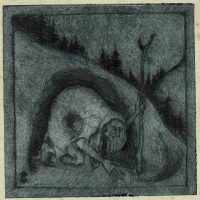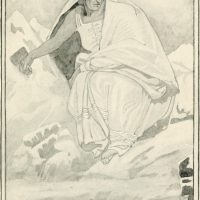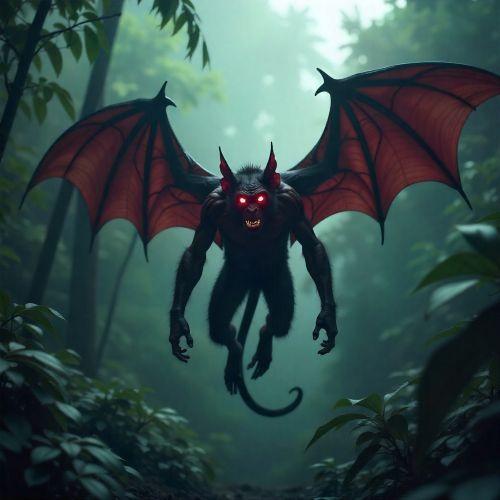Cailleach Bheur : Goddess of Winter
Listen
At a glance
| Description | |
|---|---|
| Origin | Scottish Mythology |
| Classification | Gods |
| Family Members | N/A |
| Region | Scotland |
| Associated With | Winter, Ice |
Cailleach Bheur
Introduction
Cailleach Bheur stands as one of the most enduring figures in Scottish mythology—a powerful goddess of winter who personifies the wild and untamed spirit of nature. Revered and feared in equal measure, she rules over the cold months, shaping landscapes and governing the turning of the seasons. Her legend extends across Scotland, Ireland, and the Isle of Man, weaving through generations of Celtic storytelling. Often seen as both a destroyer and a creator, Cailleach Bheur embodies the cycle of life, death, and renewal that defines the natural world. In many traditions, she represents the balance between harshness and regeneration, a reminder that every ending gives way to new beginnings.
Physical Traits
In folklore, Cailleach Bheur is portrayed as a towering, fearsome old woman whose presence evokes the very essence of winter. Her skin is often described as dark blue or pale as ice, while her hair, long and white, resembles snow swept across the hills. Some tales claim she has one blazing eye in the middle of her forehead, a symbol of supernatural insight and dominion over nature. Her teeth are said to glimmer like rusted metal, and her cloak is woven from storm clouds and frost. She carries a staff or hammer, instruments of immense power with which she shapes the earth—striking the ground to harden it with frost or hurling stones to form mountains and lochs. Her image captures the paradox of winter itself: cruel and beautiful, ancient and endlessly renewing.
Family
The genealogy of Cailleach Bheur varies across Celtic regions, though she is often regarded as a primordial mother figure. In Scottish tradition, she is sometimes associated with the Bodach, a shadowy spirit said to be her consort, and with whom she is believed to have many children. Her most significant counterpart is Brìghde (Brigid), the radiant goddess of spring and fertility. Together, the two represent the eternal rhythm of the seasons—Cailleach Bheur ruling from Samhain to Beltane and Brìghde taking over until Samhain returns. Some myths even suggest that they are two aspects of the same goddess, manifesting alternately as the Crone of Winter and the Maiden of Spring. In Irish lore, the Cailleach Bhéarra is described as the ancestor of many tribes, a mother of gods and mortals alike, emphasizing her role as both progenitor and preserver.
Other names
Known by different names throughout Celtic mythology, Cailleach Bheur’s identity reflects her wide cultural influence. In Scotland, she is most famously called Beira, Queen of Winter, a name popularized by folklorist Donald Alexander Mackenzie. In Ireland, she appears as Cailleach Bhéarra, or the Hag of Beara, a being tied to the rugged landscapes of the southwest coast. On the Isle of Man, she is known as Caillagh ny Groamagh, “the gloomy old woman,” associated with storms and tempests. The Gaelic word Cailleach itself translates to “old woman,” “veiled one,” or “hag,” terms that once held reverent spiritual connotations before becoming pejorative in later folklore. These many names highlight her role not just as a regional spirit but as a pan-Celtic archetype of winter’s sovereignty and the wisdom of age.
Powers and Abilities
Cailleach Bheur wields immense elemental power, governing the forces of cold, wind, and time. She is said to control the coming and retreat of winter, summoning snowstorms and freezing rains with the wave of her staff. Her hammer can harden the earth or shatter rock, shaping the Scottish Highlands themselves. Many mountains—such as Ben Cruachan and Ben Nevis—are credited to her handiwork, formed when she dropped stones from her creel as she strode across the land. Her breath is the icy wind that sweeps the moors, and her tears fill the lochs and rivers.
Beyond her control over nature, Cailleach Bheur is also a shape-shifter, capable of transforming into birds, deer, or even stone. In some myths, she turns herself into a giant bird to escape the coming of spring, while in others, she drinks from the Well of Youth each year to restore her vigor, only to age once more as winter returns. She is the guardian of wild animals, particularly deer and wolves, ensuring that nature’s balance endures even in the coldest months. Though often feared, her powers are not purely destructive—they ensure renewal through the cycle of decay and rebirth that sustains life.
Modern Day Influence
In the modern era, Cailleach Bheur has transcended folklore to become a symbol of resilience, transformation, and ecological awareness. Within contemporary Paganism and Neo-Druidic practices, she is honored as the crone aspect of the triple goddess, representing wisdom, endings, and regeneration. Rituals during Samhain and Imbolc often invoke her to mark the turning of the seasons, celebrating the eternal dance between darkness and light.
Her figure has also found new meaning in art, literature, and feminist spirituality. Modern writers and artists interpret her as a guardian of the Earth, embodying the fierce yet nurturing power of nature itself. She serves as an icon for environmental movements that emphasize harmony with natural cycles and respect for the planet’s fragility. The resurgence of eco-feminist thought has reimagined Cailleach Bheur not as a monster but as a matriarchal deity whose wisdom and endurance mirror the land she shapes.
Folklore associated with her continues to influence cultural traditions. Customs like predicting the length of winter on Imbolc—a practice connected to her legend—still survive in various forms, echoing in the modern Groundhog Day tradition. In the Scottish Highlands, landmarks such as “Cailleach’s Rock” or “Beira’s Seat” serve as physical reminders of her mythic deeds, linking local geography with ancient belief.
Today, Cailleach Bheur remains a potent figure in discussions of myth, spirituality, and environmental consciousness. She represents the raw truth that every winter, however harsh, eventually yields to spring—but not without leaving its mark. Her story continues to resonate as a timeless lesson in endurance, adaptation, and reverence for the ever-changing world around us.
Related Images
Source
Bird, F. (2025). The Cailleach Bheur and Hallowtide. Substack. https://fionabird.substack.com/p/the-cailleach-bheur-and-hallowtide
Evans, Z. (2019, December 6). Winter Folklore: Traditions and Customs of the Cailleach Bheur. WordPress. https://ztevetevans.wordpress.com/2019/12/06/winter-folklore-traditions-and-customs-of-the-cailleach-bheur
Love Outdoor Learning. (2025, April 18). Explore the Lore: The Cailleach. https://loveoutdoorlearning.com/explore-the-lore-the-cailleach
Mackenzie, D. A. (1928). Scottish Wonder Tales from Myth and Legend. Glasgow: Blackie & Son.
Mythopedia. (2022, November 28). Cailleach. https://mythopedia.com/topics/cailleach
Insight Vacations. (2024, July 31). The Legend of Cailleach: Scotland’s One-Eyed Creator. https://www.insightvacations.com/blog/cailleach-the-one-eyed-creator
Wikipedia. (2002, September 15). Cailleach. https://en.wikipedia.org/wiki/Cailleach
Journeying to the Goddess. (2012, December 22). Goddess Cailleach Bheur. https://journeyingtothegoddess.wordpress.com/2012/12/22/goddess-cailleach-bheur
MacKillop, J. (2004). Dictionary of Celtic Mythology. Oxford University Press.
Green, M. (1997). The Gods of the Celts. Sutton Publishing.
Ó hÓgáin, D. (2006). The Lore of Ireland: An Encyclopaedia of Myth, Legend and Romance. Boydell Press.
Gantz, J. (1981). Early Irish Myths and Sagas. Penguin Classics.
Matthews, J., & Matthews, C. (2004). The Element Encyclopedia of Magical Creatures. HarperElement.
Frequently Asked Questions
What is lorem Ipsum?
I am text block. Click edit button to change this text. Lorem ipsum dolor sit amet, consectetur adipiscing elit. Ut elit tellus, luctus nec ullamcorper mattis, pulvinar dapibus leo.
What is lorem Ipsum?
I am text block. Click edit button to change this text. Lorem ipsum dolor sit amet, consectetur adipiscing elit. Ut elit tellus, luctus nec ullamcorper mattis, pulvinar dapibus leo.
What is lorem Ipsum?
I am text block. Click edit button to change this text. Lorem ipsum dolor sit amet, consectetur adipiscing elit. Ut elit tellus, luctus nec ullamcorper mattis, pulvinar dapibus leo.
What is lorem Ipsum?
I am text block. Click edit button to change this text. Lorem ipsum dolor sit amet, consectetur adipiscing elit. Ut elit tellus, luctus nec ullamcorper mattis, pulvinar dapibus leo.
What is lorem Ipsum?
I am text block. Click edit button to change this text. Lorem ipsum dolor sit amet, consectetur adipiscing elit. Ut elit tellus, luctus nec ullamcorper mattis, pulvinar dapibus leo.









